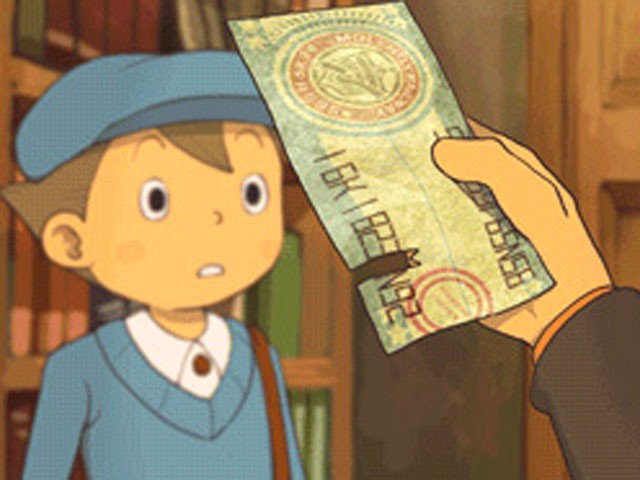Professor Layton is a British professor of archaeology, sort of Indiana Jones in a top hat. As the hero of a trilogy of games (The Diabolical Box is the second to arrive stateside), he’s become popular among gamers, a group of people who are eager to solve puzzles, the biggest of which is: Since I own a DS, what do I play on it?
Professor Layton’s answer to that conundrum is: Puzzles! The Layton games are full of brainteasers — math problems, mazes, logic puzzles and screen searches. They are scattered between episodes in a semi-animated story in which the professor and his chipper sidekick — the eerily unblinking Luke — solve the mystery behind the death of the professor’s old teacher.
Professor Layton and the Diabolical Box Rated Everyone 10 ; Nintendo DS
At first the Diabolical Box’s puzzles relate — at least tangentially — to Layton’s ongoing investigation. There’s a crime-scene to search for clues, a locked room that needs to be unlocked, a damaged map to reassemble… But within an hour, the characters are saying things like, “I don’t know anything about the box, but check out this maze…” or “Help me move these stacks of pancakes…” It’s a slightly brainier version of the Wario Ware games, which present snippets of game-action in a rapid-fire barrage of micro-games. The puzzles in Layton are thoughtful conundrums that reward intelligent thinking, imagination and a touch of patience. None of them are too difficult to solve in a few minutes. Most of them are instant-guess easy.
Like a milquetoast Scooby Doo gang, Professor Layton and Luke regularly interrupt the flow of puzzles to talk about their search for the diabolical box of the title. Several hours into the quest, the story begins to develop some emotional resonance as the characters transform into subtle creations. (A nostalgic millionaire is a beautiful example of a well-rounded videogame character.)
Any mood this bittersweet mystery evokes is sabotaged every time the game introduces another puzzle. As nice as they are, “Over 150 Brainteasers” are bound to fragment a story into a series of stops-andstarts. If the puzzles had been as handcrafted as the game’s graphics and music, or simply synchronized with the story’s sensibility, then Layton could have been a Sherlock Holmes for the new century instead of a soft-serve Hardy Boys for the Harry Potter generation.
THE GOOD: The Layton puzzles are good all-ages brainteasers — sort of casual conundrums arranged into a “Big Busy Book” for grownups (and boys and girls). These puzzles are often sliding block puzzles or mapping problems that take good advantage of the DS’s Touch Screen. But even the story problems and logic puzzles benefit from an onscreen erasable notepad.
THE BAD: As winsome and elegant as the game’s hand-drawn character designs are, they get jumbled together in too many styles. Occasional blasts of traditional animation are followed by frozen comic-book poses (in which Luke’s eyes bug out of his head), interspersed with the waddling of a dismal CGI hamster. Greater care with the game’s art direction would have unified Layton’s visual style and prevented the game’s storyline from feeling so fragmented.
THE BOTTOM LINE: A whimsical story and a slew of straightforward puzzles collide in the form of the Professor Layton’s Diabolical mystery.
















